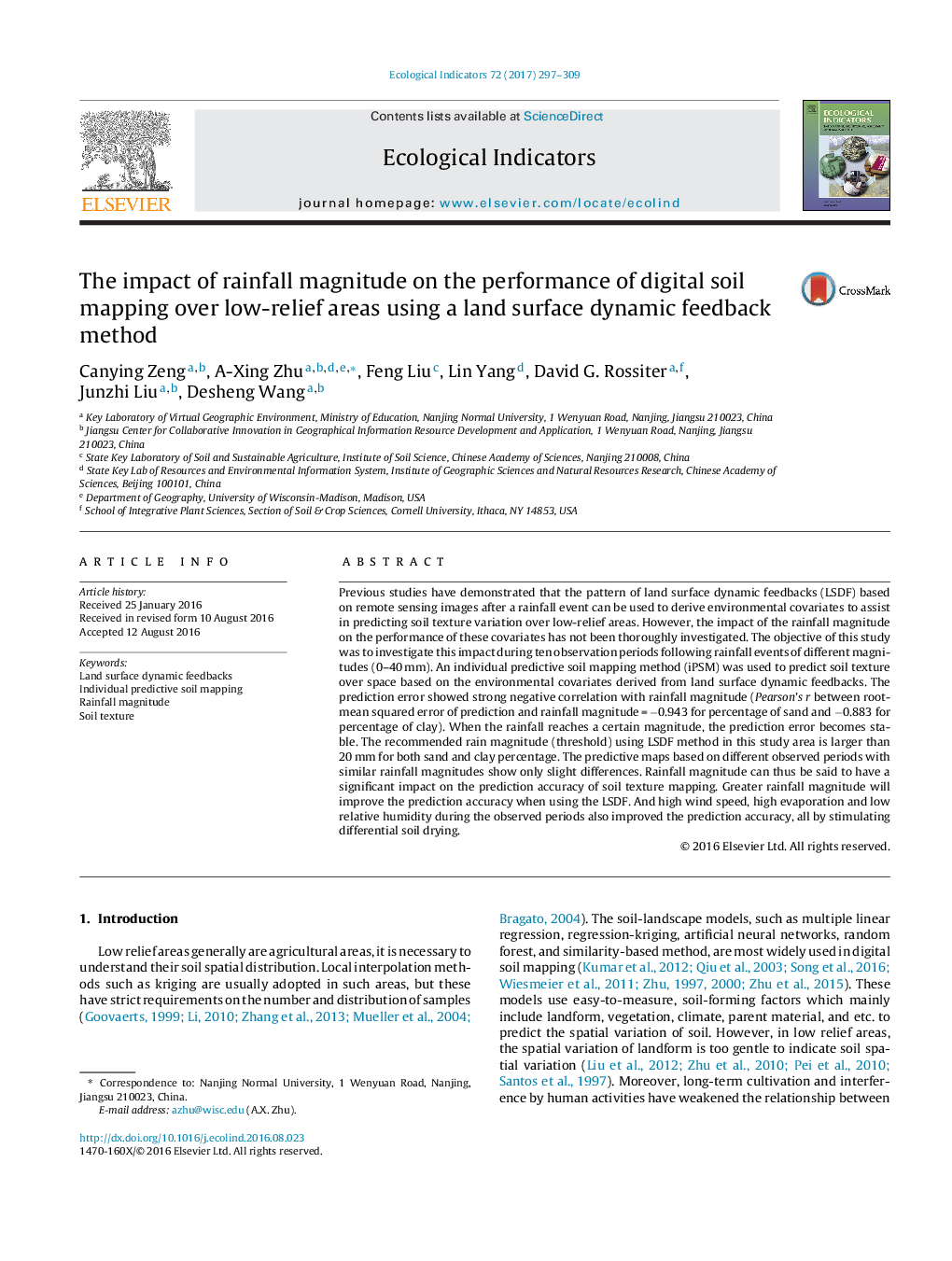| Article ID | Journal | Published Year | Pages | File Type |
|---|---|---|---|---|
| 6292762 | Ecological Indicators | 2017 | 13 Pages |
Abstract
Previous studies have demonstrated that the pattern of land surface dynamic feedbacks (LSDF) based on remote sensing images after a rainfall event can be used to derive environmental covariates to assist in predicting soil texture variation over low-relief areas. However, the impact of the rainfall magnitude on the performance of these covariates has not been thoroughly investigated. The objective of this study was to investigate this impact during ten observation periods following rainfall events of different magnitudes (0-40 mm). An individual predictive soil mapping method (iPSM) was used to predict soil texture over space based on the environmental covariates derived from land surface dynamic feedbacks. The prediction error showed strong negative correlation with rainfall magnitude (Pearson's r between root-mean squared error of prediction and rainfall magnitude = â0.943 for percentage of sand and â0.883 for percentage of clay). When the rainfall reaches a certain magnitude, the prediction error becomes stable. The recommended rain magnitude (threshold) using LSDF method in this study area is larger than 20 mm for both sand and clay percentage. The predictive maps based on different observed periods with similar rainfall magnitudes show only slight differences. Rainfall magnitude can thus be said to have a significant impact on the prediction accuracy of soil texture mapping. Greater rainfall magnitude will improve the prediction accuracy when using the LSDF. And high wind speed, high evaporation and low relative humidity during the observed periods also improved the prediction accuracy, all by stimulating differential soil drying.
Keywords
Related Topics
Life Sciences
Agricultural and Biological Sciences
Ecology, Evolution, Behavior and Systematics
Authors
Canying Zeng, A-Xing Zhu, Feng Liu, Lin Yang, David G. Rossiter, Junzhi Liu, Desheng Wang,
